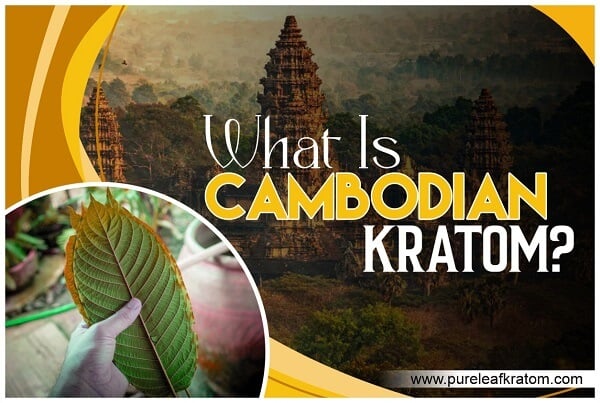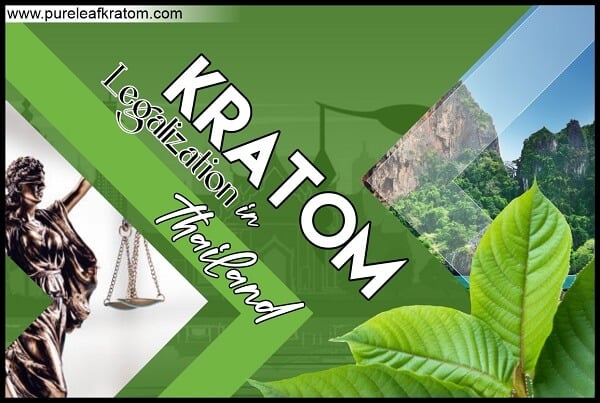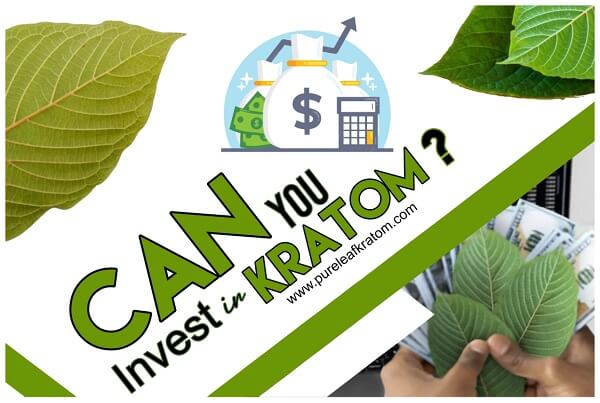- Announcements
- Features
- Kratom Buying Guide
- References
- Reviews
- Tips
- Kratom
- Kava
- Delta
- Mushrooms
- Knowledge

The Future, The Present, And The History Of Kratom
 Lisa Garcia
Kratom Buying Guide | References | Reviews
Lisa Garcia
Kratom Buying Guide | References | Reviews
02/03/2023 1:14pm
7 minute read
We all understand that the history of Kratom is an integral part of knowing what this substance can offer and what kind of properties it has. Kratom has become popular in recent years, but it goes back several centuries and its roots are quite deep in the culture of Southeast Asia. When you want to see how this herb impacts consumers, get to know how it was perceived earlier and how you may be using it in the future.
Kratom was introduced in the United States only a few decades ago and since then we have seen so many highs and lows. If you want to understand why and how this botanical has become the talk of the town in recent years, get to know its history and you will understand why there are millions of consumers in the country and other regions.

Click Here To Buy Premium Quality Klarity Kratom Maeng Da Kratom Capsules Online
The History Of Kratom Consumption In Southeast Asia
Mitragyna is a botanical substance that grows in Southeast Asia. The leaves of this tree were a part of the traditional medicines of the region. People who were suffering from pain, and illness consumed this substance and as it had fast results, it became a regular medicinal herb. Some of the Mitragyna strains were used to relax and reduce stress. People believed that these kratom strains were the ones that could alleviate pain because they reduced their stress and made them feel at ease.
Mitragyna trees grow in the wilderness in Southeast Asia, and they are rich in alkaloids. The people of the region have used the leaves of this tree for various health conditions over centuries and that is why this tree became famous as an exotic and impactful botanical that soon started getting popular across borders.
History of Kratom In America
In the late 90s and early 2000s, Kratom crossed borders and entered the United States as a special discovery that was all-natural and robust in results. The energy-boosting quality of this botanical made it an equally popular botanical thousands of miles away from its birthplace. Many manufacturing units in America imported hand-picked and fresh Ketum leaves from Southeast Asian countries like Thailand, Malaysia, and Indonesia.
These units created potent powder, capsules, extracts, and even creative products like gummies and shots for consumers all over the country. The variety of products has increased over the years, but so has the opposition. The scientific research on Kratom is very little to date, and that is why many people don’t know anything about this botanical.
The federal government allows the import of Mitragyna and allows consumption. However, every state has its laws, and some of them have banned Ketum consumption. This ban is due to the FDA’s reaction to the arrival of Kratom in America. America’s Food Administration believes that the effects of Mitragyna are not the same for all individuals and therefore, it is not approved by this authority.
Kratom products are not regulated by the FDA, which means that vendors can make big profits if they fool consumers and sell old or inactive Ketum products. There are no FDA checks on the products available in America. This is why many people do not want to use this substance as they are not sure if it is safe for them.
Kratom Bad Press And How It Impacted The Kratom Industry In America
When Kratom was introduced in America, it was imported by a few Ketum manufacturing units and everything was gradually expanding. Despite the FDA’s lack of approval, the Ketum industry was growing fast. However, in 2014, the DEA began a crackdown and confiscated Mitragyna after claiming that it was similar to some opioids that could be addictive.
In 2016, and 2018 there was a Salmonella outbreak. This compelled the DEA to ask all manufacturers to recall their products. There was also a tragic death due to the overdose of Ketum along with other organic substances. This epidemic pushed the DEA to request the federal government to schedule Kratom as a Schedule 1 drug. The government did not ban Ketum because the outbreak was not due to the herbal substance but the contamination that made it unsafe for use.
However, this incident was enough to make numerous potential consumers take a step back from trying this botanical. The federal government did not change the law regarding Mitragyna but the negative feedback from the DEA and FDA made many people feel that this organic substance was not safe. Since then, many Ketum consumers and the American Kratom Association have made efforts to improve this situation and clear the reputation of this herb.
What Does The AKA Do To Protect The Image Of Kratom?
The AKA was formed as an administrative body that could regulate, check, and approve Mitragyna products from various manufacturing units. This association checks the online shops and ensures that they are sourcing fresh and potent Kratom leaves. Moreover, the precise processing steps are also closely checked to make sure that consumers get the best quality Mitragyna.
All the products have to be tested in laboratories to get a detailed report on the number of alkaloids, their quantities, and the presence of any fungi, or bacteria in the product that can cause health issues in consumers.
The AKA has laid down these prerequisites along with the GMP standards of packaging that will ensure that the substance stays fresh till the last dose. Another vital part of clearing the reputation of Kratom is to educate consumers about this botanical and stress the importance of dosage. If consumers follow their dosage properly, many of the unwanted side effects of Kratom can be avoided.
Frequently Asked Questions
The questions asked by potential consumers are answered by experts, and they will help you understand more about the history of Kratom and the reason for the various ambiguities around this botanical.
Q: Was Kratom Illegal In America?
A: No, Kratom was never illegal in the country. Some states banned Ketum but now only six states ban this substance. It is expected that as more and more consumers are talking about their positive experiences, this substance will become available in all states. Today, many states have regulated the production of Mitragyna within their jurisdiction, or have implemented the Kratom Consumers Act to safeguard the people who use this herbal product.
Q: Do Southeast Asians Still Chew Ketum Leaves For Energy And Stimulation?
A: The Asian native chewed leaves when Ketum products like powder, capsules, and liquids were not available. However, now that there are so many diverse products available in the market, people all over the world can use them for more focus, motivation, and positivity.
These people believed that the relaxing Mitragyna strains could ease their pain, but through consumer reviews, we know that the relaxing and soothing impact of Mitragyna makes consumers feel at ease and hence they feel liberated from any health issue that they felt previously.
Q: Does The History Of Kratom Mean That It Will Never Be Legal In All States?
A: The AKA and Kratom enthusiasts are working to get Kratom legalized in every state. There are currently only six states where Mitragyna is not legal. However, there is a constant effort underway to get these states to regulate or legalize the use of Mitragyna. Despite the DEA’s efforts to get Kratom banned, it has not happened. Now that there are so many consumers in America, the chances of full legality are brighter than before.
If you are in one of the states where Ketum is banned, you can file a petition and there will be thousands of other consumers who can join. Even if you don’t, the AKA is already trying to convince policymakers and law-enforcing authorities to legalize Kratom for all.

Click Here To Buy Premium Quality Bali Gold Kratom Powder Online
Related Articles

About Time You Should Know About Exotic Kratom Varieties. What Is Cambodian Kratom?
7 minute read
02/03/2023 8:29am

Kratom in Thailand: Can I Legally Consume this product?
7 minute read
02/03/2023 9:15am

Investing in Kratom: The New Financial Craze
6 minute read
02/03/2023 1:07pm
